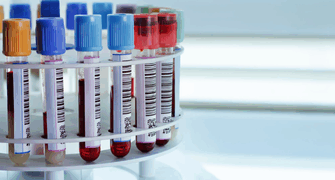 Resource Library
/
Qualification of the Quanterix Phospho-Tau 217 (pTau-217) assay using the Simoa HD-X platform
Resource Library
/
Qualification of the Quanterix Phospho-Tau 217 (pTau-217) assay using the Simoa HD-X platform
poster
Qualification of the Quanterix Phospho-Tau 217 (pTau-217) assay using the Simoa HD-X platform
Alzheimer’s disease (AD) is a neurodegenerative disorder which stands as one of the most formidable challenges facing public health in the 21st century. It has affected around 50 million people worldwide and is projected to reach 152 million by 2060. Over decades, significant efforts have been dedicated to finding its cause, pathogenic mechanisms, biomarkers for early detection, and clinical trials for its treatment and positron emission tomography (PET) and cerebrospinal fluid (CSF) biomarkers have been the most widely used indicators to aid diagnosis in clinical research with limitations for clinical practice.
Blood biomarkers are emerging as non-invasive predictive or diagnostic markers of AD. Among all, the measurement of phosphorylated tau (pTau) plays a crucial role demonstrating superior diagnostic accuracy and disease specificity compared to other existing blood biomarkers. In particular, pTau-217 has been shown to predict pathological AD earlier than other phosphorylated tau forms (pTau-181 and pTau-231) and its quantification can be used to discriminate AD from other neurological disorders or guide timely treatment decisions.
Here we present the qualification results of the ultra-sensitive ALZpath pTau-217 assay for human plasma using the Quanterix Simoa HD-X platform.
Register to gain access to gated resources.
"*" indicates required fields
Resources to Consider


Neurofilament Light Chain: Method Validation of Quantitation Using...

Method Validation of Quantitation IL-17A in Human Serum using the...

AAIC 2025: Comparison of Plasma pTau217 Assays on Different Platforms

pTau217 Biomarker Assay

Testing of Carryover & After MRD Benchtop Stability for...

Rapid, accurate and highly customizable assay platforms for...

EBF 2025: A generic immunogenicity assay for the detection of...

Biomarkers Assay List – July 2025

AAPS 2024: A GxP-Qualified dPCR-Based RCL Assay to Quantify...




